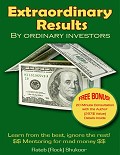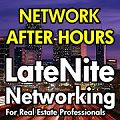Atlanta Real Estate Investors Alliance Blog
7 Ways To Find 7 Deals In 7 Days at AIM on June 8, 2015
Posted on June 5, 2015 byBecome a Marketing Machine and the “Go To” Person in Your Market for Doing Deals
with Rateb “Rock” Shukoor
June 8th, 7:00PM, Hudson Grille, Sandy Springs, GA

Atlanta REIA Members Please RSVP on Meetup.com
if you have a meetup account.
 Our next All Inclusive Marketing (AIM) Group Meeting is Monday, June 8th at 7:00PM at the Hudson Grille located at 6317 Roswell Rd in Sandy Springs.
Our next All Inclusive Marketing (AIM) Group Meeting is Monday, June 8th at 7:00PM at the Hudson Grille located at 6317 Roswell Rd in Sandy Springs.
Do you have all the leads you could ever need?
Do you want to lean how to find deals that others are looking for and cannot find?
Marketing has been one of my strong suites and I am very proud of the results I have produced over the years from most of my campaigns. It is time to showcase my guerrilla marketing skills and show you how to find at least one deal a day.
Yes, I said ONE deal a day. I will show you 7 ways to find 7 deals in 7 days, and find all the deals you need as well.
I will be sharing with you everything you need to know about how to find deals quickly and with using very little money, if any at all. If you have a phone and have access to a computer, you are in business.
I will explain the whole process: the small but vital details, where to find deals, how to find the sellers and how to stay focused in order to find one deal a day.
Here are the items I will share with you:
- Where to find deals
- How to sell them in a flash
- What market to choose
- Where to get the list of prospects
- What kind of properties to focus on
- Where to get the money from for these deals (Only if you need them)
- How to partner with me to use a list of over 6,000 cash buyers
- And much, much more
EARLY BIRD BONUS: I believe in rewarding action takers and entrepreneurs that are willing to do what it takes in order to change their lives or have the desire to get better at what they are already doing. Therefore, I will offer some bonuses. As a special bonus this month for all “early birds,” I am offering the following:

- A digital copy of my book, “Extraordinary Results by Ordinary Investors”
- A digital copy of my new book, “The Dynamic 6”
- Marketing audit of your business or consulting, $250 value
This is a must attend event! We will meet at our usual location at the Hudson Grille at 7:00PM and be there until 9:00PM and then hang out and have our Late Nite Networking. I look forward to seeing you at the meeting!

Atlanta REIA Members Please RSVP on Meetup.com
if you have a meetup account.
*Please Note: AIM Meeting agenda is subject to change.
 After the conclusion of our All Inclusive Marketing Meeting, we will be hanging out at the Hudson Grille for “Late Nite Networking” to socialize and build stronger bonds. So come and join us for the AIM Meeting and be prepared to stay late and network and have fun with like minded real estate investors, marketers and other professionals late into the evening!
After the conclusion of our All Inclusive Marketing Meeting, we will be hanging out at the Hudson Grille for “Late Nite Networking” to socialize and build stronger bonds. So come and join us for the AIM Meeting and be prepared to stay late and network and have fun with like minded real estate investors, marketers and other professionals late into the evening!
 The Atlanta REIA All Inclusive Marketing (AIM) Group (formerly known as the “I Love Marketing” group) is a new networking and educational meeting led by Rock Shukoor and Dustin Griffin for like-minded real estate investors and small business owners who enjoy marketing and are interested in taking their business to the next level through creative marketing techniques.
The Atlanta REIA All Inclusive Marketing (AIM) Group (formerly known as the “I Love Marketing” group) is a new networking and educational meeting led by Rock Shukoor and Dustin Griffin for like-minded real estate investors and small business owners who enjoy marketing and are interested in taking their business to the next level through creative marketing techniques.
AIM is for people who want to get together, learn and discuss marketing challenges, strategies and opportunities. Although many of the examples we cover at the meetings will be geared towards real estate investors, the techniques and strategies learned can easily be applied to any business. AIM meets on the 2nd Monday of each month at 7:00PM at the Hudson Grille located at 6317 Roswell Rd in Sandy Springs.
Learn to Find, Fund, Fix & Flip Houses with Don DeRosa on June 15, 2015
Posted on June 2, 2015 bywith Special Guest, Don DeRosa
Members Attend for FREE and Guests for $15 Online or Pay $20 at the Door.
Guests can join Atlanta REIA for Only $100/year and Attend for FREE!

Atlanta REIA Members Please RSVP on Meetup.com
if you have a meetup account.
 This month at the Beginning Investors Group (BIG), we are excited to have our good friend and local real estate investing expert, Don DeRosa, as our special guest speaker. Don will be teaching us the basics of rehabbing houses for big profits. The meeting will take place on Monday, June 15th at 6:30PM at Hudson Grille located at 6317 Roswell Rd in Sandy Springs.
This month at the Beginning Investors Group (BIG), we are excited to have our good friend and local real estate investing expert, Don DeRosa, as our special guest speaker. Don will be teaching us the basics of rehabbing houses for big profits. The meeting will take place on Monday, June 15th at 6:30PM at Hudson Grille located at 6317 Roswell Rd in Sandy Springs.
Are you new to real estate and the thought of purchasing an ugly house that needs lots of work terrifies you? Maybe the thought of a rehab is exciting to you, but you haven’t actually followed through with it yet because you fear that you do not have enough knowledge about funding and fixing houses to take that plunge. Rehabbing houses can mean BIG PAYCHECKS, but they can also come with VERY EXPENSIVE LESSONS if you don’t know what you are doing.
Please join us this month at BIG as Don helps to take away the guesswork behind what it takes to quickly and profitably rehab houses.
At the meeting, Don will teach us…
- What to look for in a rehab property
- How to evaluate what rehab is needed in a property during your pre-purchase inspection
- How to determine what you should fix and what you should not
- Where you can get the biggest “bang for your buck”
- How to estimate repair costs
- Should you do the repair yourself or hire someone else to do it for you?
- How to pick a good contractor
- And much, much more!
Don DeRosa has successfully completed many of his own rehab projects. He is also an author, teacher, coach, and national speaker. Don has trained thousands of new and experienced investors alike and helped them build their wealth in real estate. Don’t miss this opportunity to learn from an expert.
And that’s just the beginning….Don will be teaching a 2 Day Rehabbing 101 Workshop in July where he will teach you much more detailed information about rehabbing and even take you out to SHOW you some rehab projects in progress. This is an amazing opportunity to get some practical, HANDS-ON education into how to successfully rehab houses.
We look forward to seeing you at the meeting!

Atlanta REIA Members Please RSVP on Meetup.com
if you have a meetup account.
 After the conclusion of the Atlanta REIA BIG Meeting (after 9:00PM), we will be hanging out at the Hudson Grille for Late Nite Networking also known as the “Meeting After the Meeting”. Stick around, have some dessert, a drink, network and have fun with like-minded investors and real estate professionals as we hang out late into the night!
After the conclusion of the Atlanta REIA BIG Meeting (after 9:00PM), we will be hanging out at the Hudson Grille for Late Nite Networking also known as the “Meeting After the Meeting”. Stick around, have some dessert, a drink, network and have fun with like-minded investors and real estate professionals as we hang out late into the night!
*Please Note: Meeting agenda is subject to change.
If you become an Atlanta REIA member before midnight, June 14th, you may attend this BIG Meeting at no charge as well as other great Atlanta REIA Meetings, plus get great discounts on other Atlanta REIA Workshops.
 BIG is an educational and networking special interest group, hosted by Dustin Griffin for new investors who are just getting started in real estate investing as well as “new again” real estate investors who’ve taken a few years off and are looking to start investing again. The entire purpose of this group is to educate and inspire new investors working on their “first deal” and help new again investors get their “next deal”. Please join us on the 3rd Monday of each month at Hudson Grille located at 6317 Roswell Rd in Sandy Springs.
BIG is an educational and networking special interest group, hosted by Dustin Griffin for new investors who are just getting started in real estate investing as well as “new again” real estate investors who’ve taken a few years off and are looking to start investing again. The entire purpose of this group is to educate and inspire new investors working on their “first deal” and help new again investors get their “next deal”. Please join us on the 3rd Monday of each month at Hudson Grille located at 6317 Roswell Rd in Sandy Springs.
Determine Your Wholesale Market at the Atlanta Wholesalers Group on June 16, 2015
Posted on June 2, 2015 byNot if You are This Guy…
with Special Guest, Rodrigo Afanador
June 16th, 7PM, Hudson Grille
6317 Roswell Rd, Sandy Springs, GA

Atlanta REIA Members & Guests, Please RSVP on Meetup.com
if you have a meetup account. Non-Members can also attend at No Charge
 Here in Atlanta, we are blessed to have more opportunities to do deals than most places. With a population of more than 5 million, opportunity lies everywhere. However, it is extremely difficult to actually DO deals everywhere. So, we take our maps and carve out our small areas. Those small areas still easily have a population of a couple hundred thousand people though.
Here in Atlanta, we are blessed to have more opportunities to do deals than most places. With a population of more than 5 million, opportunity lies everywhere. However, it is extremely difficult to actually DO deals everywhere. So, we take our maps and carve out our small areas. Those small areas still easily have a population of a couple hundred thousand people though.
What if you could leverage the knowledge of someone who is doing deals consistently with a target area of under 20,000 people? Rodrigo Afanador does just that and is very excited to share with us this month at the Atlanta Wholesalers group meeting on Tuesday, June 16th.
Rodrigo is a good friend of mine and does his wholesaling in Asheville, North Carolina. While Asheville has 80,000 people compared to Atlanta’s 5M+, Rodrigo still takes his target market down to around 15,000 – 20,000 people for 80-90% of his business. He is also a newer investor who hasn’t been doing this for too terribly long, but has gone full time now and is creating his own success story each and every day.
Rodrigo has a valuable story because each and every one of us can relate to at least some part of it. We all were new investors at one point or may still be a newer investor and he has taken the plunge into doing this full time like so many of us also have or hopefully plan to be able to do.
I know that you will learn a great amount of information from hearing Rodrigo speak with us about how he gets his business done in a market where most people would say “there aren’t enough houses to find deals.” His knowledge is abundant. His story is inspirational. And his efforts are greatly rewarding.
You won’t want to miss Rodrigo share his story and learn his tricks for success. Come ready to do business while you are here as well.
My name is Frank Iglesias. Come join us on Tuesday, June 16th at 7PM at the Hudson Grille located at 6317 Roswell Rd in Sandy Springs as we network, do what is now our standard deal analysis at every meeting and then we will dive into our topic for the evening! See you there!

Atlanta REIA Members & Guests, Please RSVP on Meetup.com
if you have a meetup account. Non-Members can also attend at No Charge
 This Atlanta Wholesalers group is primarily for wholesalers who are serious about the business and not just “trying” Real Estate out. Frank started this group to work with other wholesalers who are serious about building their business using the utmost of honesty and integrity. We are looking forward to exploring how we can grow together in our local market. We hope you will join us!
This Atlanta Wholesalers group is primarily for wholesalers who are serious about the business and not just “trying” Real Estate out. Frank started this group to work with other wholesalers who are serious about building their business using the utmost of honesty and integrity. We are looking forward to exploring how we can grow together in our local market. We hope you will join us!
Try Symphony Tools to Sync Your Blog to Facebook, Twitter and LinkedIn for 3 Months for FREE
Posted on May 30, 2015 byI have been using a Facebook app for several years called “Networked Blogs” to sync my blog posts with both Facebook and Twitter. Recently, Network Blogs converted their services over to a new product they call “Symphony Tools” or “Symphony” for short. Whereas Networked Blogs was a free service that is being discontinued over time, Symphony is a brand new paid service that is more powerful and user friendly than Networked blogs ever was.
I use Symphony Tools to sync 4 of my blogs AtlantaREIA.com, TampaREIA.com, CharlotteREIA.com & SavannahREIA.com with their corresponding Facebook and Twitter Pages.
For example, every time a post a new blog post to AtlantaREIA.com, within 5 minutes, my blog post is automatically posted to both Facebook and Twitter. In fact, Symphony automatically checks my blog RSS feed for new posts every 5 minutes, 24/7/365 and posts any new posts or updates to my blog. This means all I have to do is keep my blog updated and Symphony will keep my Facebook and Twitter pages updated for me so that is one thing less I have to worry about doing.
I’ve been using Symphony for the past several months and it has worked flawlessly. Initially, due to the migration from Networked Blogs to Symphony I had a few problems and lots of questions. However, on the bottom of the Symphony app, there is a “Chat with Us” link where you can actually chat with a live person during normal business hours. Their support staff was very helpful and answered my questions and addressed my problems quickly.
Overall, I’ve been very happy with the new Symphony tools and I think you will be too if you are an active blogger and user of Facebook, Twitter and/or LinkedIn. In fact, if you are interested in social media, here is a special link you can use to Try Symphony Tools for 3 Months for FREE! Read More→
The Profit Newsletter June 2015 Edition
Posted on May 29, 2015 by The June 2015 Edition of The Profit Newsletter is available for download just in time for our Atlanta REIA Main Meeting on June 1st. There are 42 pages of valuable information this month for your real estate investing success. Download it and check it out! The Profit is Atlanta REIA’s digital, interactive newsletter for serious real estate investors delivered as an Adobe PDF file to read on your PC, Mac, Smart Phone, iPad or other mobile ready devices. Many of the articles and ads in The Profit contain many hyperlinks you can click to get more information online! The high res version of The Profit is “print ready” for those who want to print the newsletter on their home or business printer. Be sure to Subscribe to The Profit by Email or Subscribe to The Profit by Text so you don’t miss a single issue.
The June 2015 Edition of The Profit Newsletter is available for download just in time for our Atlanta REIA Main Meeting on June 1st. There are 42 pages of valuable information this month for your real estate investing success. Download it and check it out! The Profit is Atlanta REIA’s digital, interactive newsletter for serious real estate investors delivered as an Adobe PDF file to read on your PC, Mac, Smart Phone, iPad or other mobile ready devices. Many of the articles and ads in The Profit contain many hyperlinks you can click to get more information online! The high res version of The Profit is “print ready” for those who want to print the newsletter on their home or business printer. Be sure to Subscribe to The Profit by Email or Subscribe to The Profit by Text so you don’t miss a single issue.
Why Ignore Profits in the Note Business, When You Are Already in It?
Posted on May 29, 2015 by Most real estate investors have heard of the “Note Business” but many misunderstand it while others think that it is completely separate from the real estate business. The fact is, most real estate investors are in the note business, and they just don’t know it. The note business is the financing side of the real estate business.
Most real estate investors have heard of the “Note Business” but many misunderstand it while others think that it is completely separate from the real estate business. The fact is, most real estate investors are in the note business, and they just don’t know it. The note business is the financing side of the real estate business.
Note Business in the Simplest Terms
The note business is based upon the purchase, sale and assigning of two documents: the promissory note and the mortgage agreement. These two documents represent a promise to pay and a solution for non-payment.
Note = Promissory Note = IOU (I Owe You)
Mortgage = Collateral Agreement = Foreclosure Agreement
When someone borrows money to purchase real estate, they have to sign an agreement to promise to pay it back. This agreement also outlines the terms of the payback. This written promise is not enough to get a loan. This promise must be backed by collateral of value, which is typically the real estate itself. The collateral agreement pre-authorizes the foreclosure of the property if the debt is not paid according to the promissory note. Read More→
Preventing Data Theft in QuickBooks
Posted on May 29, 2015 byBe proactive about the security of your QuickBooks company file, and you’ll be less likely to encounter data theft.
Thanks to the internet, privacy has been on the wane over the last few years. We assume that our addresses and phone numbers are public information, thanks to sites like Switchboard and 411.com. We hope that our dates of birth are private (though the number of birthday wishes on Facebook makes that doubtful), and we assume that our Social Security numbers are hard to get.
Your customers/tenants trust you enough to provide you with additional private information, like credit card numbers, bank numbers and more. And you’ve seen what an uproar occurs when major corporate entities like Target and Home Depot get hacked.
Your small business may not have hundreds of thousands of customer/tenant information files, but you can still be targeted by external hackers and even your own employees. Are you taking measures to ensure the security of that data stored on your hard drive and/or in the cloud? Read More→
Foreclosure Activity Drops?
Posted on May 29, 2015 byThere has never been a foreclosed house which didn’t have potential profit written all over it. Today, several indicators including the firm RealtyTrac have released 1str Quarter 2015 data which shows foreclosure filings and default notices, scheduled auctions and bank repossessions are down over 5% from the prior Quarter over 2014 and are the lowest since 2007.
Knowing the true value of real estate is critical, try to do a deal without it and see. The guidance and data within REIAComps has consistently shown investors how to determine both solid acquisition value and after repair value to earn lasting profits.
Some of the most stubborn foreclosure cases are finally being flushed out of the foreclosure pipeline, and we all can expect to see more noise in the numbers over the next few months as national foreclosure activity makes its way back to more stable patterns by the end of this year. Thus, while foreclosures are down, they will always be with us. As investors, this s a good thing!
The data tells us a total of 152,147 U.S. properties started the foreclosure process for the first time in the first quarter of 2015. This number is down 11 percent from the previous quarter and down 8 percent from a year ago. Read More→
Valuable Partners
Posted on May 29, 2015 byPartners can really make or break your business. Finding good ones is easier said than done. How do you find or attract the right partners? How do you know when the right person comes along? Will they want to partner with you and what should you offer them when they do want to partner with you? These are questions I get asked all the time. Here are some ideas about partnering in real estate but this article is not about the legal structuring side of partnerships, it’s about the people side.
A good partnership starts with equal but opposite skills, not necessarily a friendship. It’s good to be friends with a partner but contrary to popular belief that is not the most important part and not where you should start. A good partner will bring strength to your weaknesses and you the same for them. You are going to be splitting a lot of hard earned cash with this person so you want to know what it is that they bring to the table. What are they capable of that you are not and what are they capable of that you couldn’t easily hire an employee to do? The first step in answering the questions is to do a long self-analysis. Start with what you are good at. Ok you don’t need a partner to do any of those things. Now what are you really bad at? Now you know what a partner should bring as far as skills are concerned. They need to be good at what you are bad at or have what you don’t. Read More→
Ugly is the New Pretty
Posted on May 29, 2015 by Warm weather is finally upon us! Time to get ready for those Summer vacations – trips to the beach, cookouts, swimming, boating, golf, tennis, and everything else that we love to do outside when the weather is warm.
Warm weather is finally upon us! Time to get ready for those Summer vacations – trips to the beach, cookouts, swimming, boating, golf, tennis, and everything else that we love to do outside when the weather is warm.
Of course, if you live in the South, Southern California, or a place like Phoenix, you’re used to having nice weather all year ’round. And I hate you. :)
But if you’re like me, and live in a place where you get all four seasons (yay), you can appreciate how the change in weather can also trigger a change in perspective.
Long intro aside, there’s something that I’ve been noticing over the past few years when it comes to marketing…
Ugly is the New Pretty!
What does that mean? It means that a lot of the usual, conventional, traditional marketing pieces or campaigns that USED to work for many years… simply don’t work much any more these days. Read More→
Get Huge Response Rates And Locate More Motivated Sellers Using Lumpy Mail
Posted on May 29, 2015 byOne way a lot of real estate investors use lumpy mail is when they are working the pre-foreclosure market. These people are getting stacks of mail and post cards every day from mortgage companies, attorneys and other investors. There is a lot of competition for these properties so you need to do something to make your mail stand out and look different from the others so it gets opened first. Since there are fewer foreclosures these days getting noticed is even more important to your success.
There are several ways to do this. One is to simply insert something into the envelope if you are mailing a letter. It might be a piece of candy or gum with information about your business with a tag line of “In a sticky situation? Call us first”. Or, if you are using a piece of candy it might say, “Call us first, we can make you a sweet deal”. It just needs to be something that makes your mail piece look different, and makes it stand out from everyone else’s.
You could also use a lumpy mail piece like a penny, then within the body of your letter; say something like “a penny for your thoughts on selling your home”. You just need to be using something that grabs the seller’s attention. Anything that feels different or makes noise will accomplish this for you. Be creative with your mailings and you will create more leads and do more deals. Read More→
It’s Time to Get Your Money Machine Started TODAY!
Posted on May 29, 2015 byRecently a friend of mine sent me a chart created by the United States census bureau showing the numbers of home ownership from 1965 until 2015. Amazingly the number of home ownership in 2015 was almost exactly the same as it was in 1965. I found this very interesting because throughout all of those years between 1965 and 2015 homeownership escalated slowly until 2006 when the real estate market crash took place because of all the defaulting loans. As house prices dramatically declined people felt their homes were worth less than what they owed so many people quit making their loan payments causing many of the defaulted loans people could no longer afford. I thought about what this chart represented for today’s real estate investors and I believe this chart shows us there is great opportunity for real estate investors of all kinds everywhere.
I am starting to see more and more new construction everywhere I travel and I am also seeing more and more deals completed by my students who are savvy investors all over this country. I’m an optimist, I truly believe that we are going to see huge profits made by those who step out of the traditional box and structure their deal differently than those who only do what everyone else is doing. I believe those of us who think different than the masses will prosper far more than the status quo. I am seeing the market slowly making a comeback from the disasters of 2008 for some of us but not those who are stuck in yesterday’s methods and mindset. Read More→


